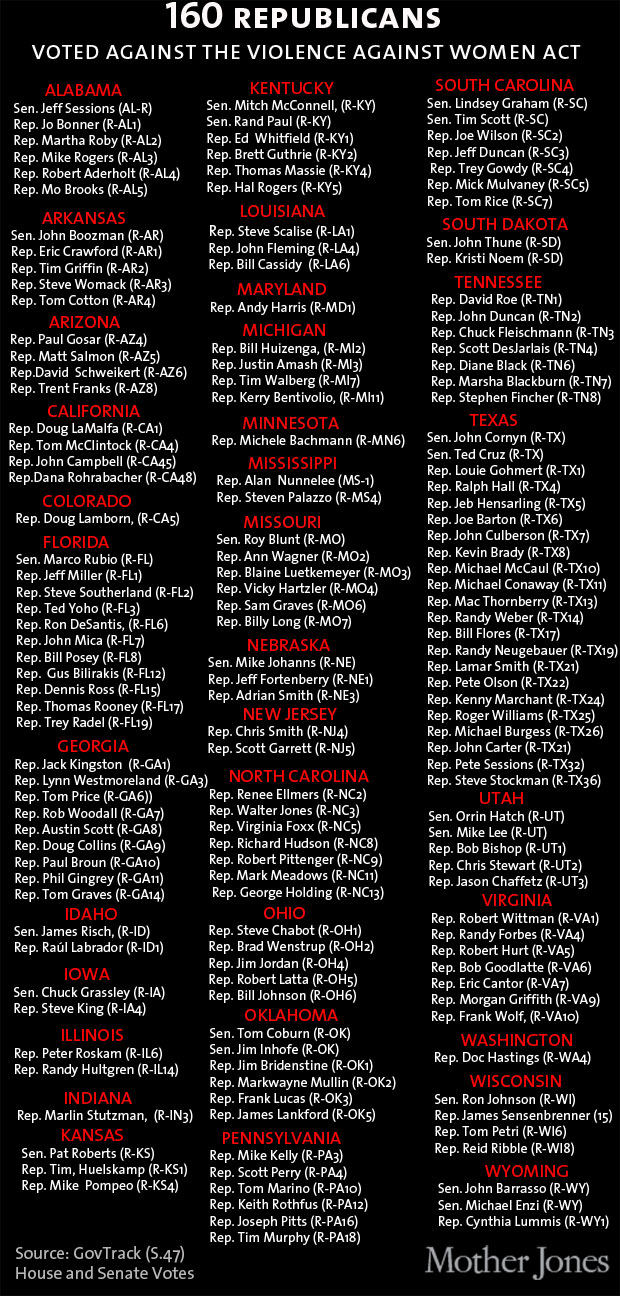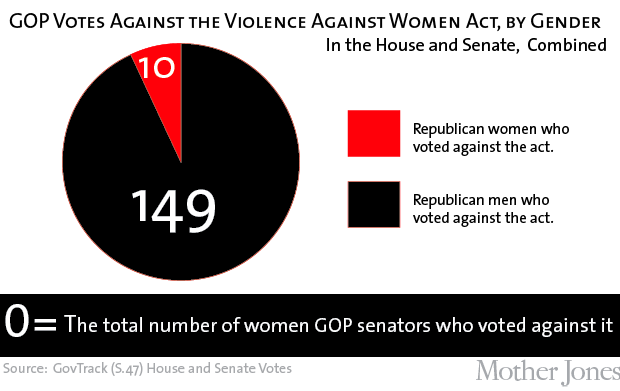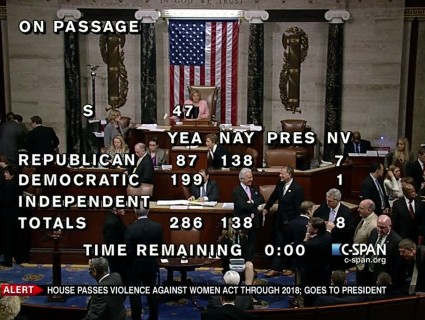On Thursday, the House finally reauthorized the Violence Against Women Act—a full year and a half after it expired. VAWA had been held up by House Republicans in the last Congress after the Senate voted to add new provisions aiding Native American, immigrant, and gay victims of violence.
It looked as if the bill might suffer the same fate in the 113th Congress, after the House GOP leadership refused to schedule a vote on the version of the bill passed by the Senate 78 to 22, and instead pushed a stripped down version without protections for LGBT and Native American women. But in the end Republican lawmakers allowed a vote on the Senate’s legislation, and it passed on Thursday, 286 to 138. Not one Democrat in either chamber voted against it. (Though one representative abstained.)
One major change to VAWA that drew objections from House Republicans were steps to give tribal courts greater jurisdiction over domestic violence committed by non-native men on Native American lands. The National Congress of American Indians defines congressional districts as having a “high concentration” of Native Americans when the community makes up .3 to 23 percent of the population. (Only a few such districts are in the higher range; most are in the low single digits, according to NCAI.) Here is how members of Congress from those districts voted:

The VAWA reauthorization also provides more access to services for immigrant victims of violence, and also helps them get special visas to stay in the US if they are victims of a serious crime. Here’s how representatives from districts where Latinos make up over 25 percent of the population voted (Source: Proximity):

And here’s the full breakdown of Republican votes in the House and Senate against reauthorizing VAWA:

And finally, here’s a chart detailing how many of the Republican legislators voting against the bill were men, and how many were women:

















